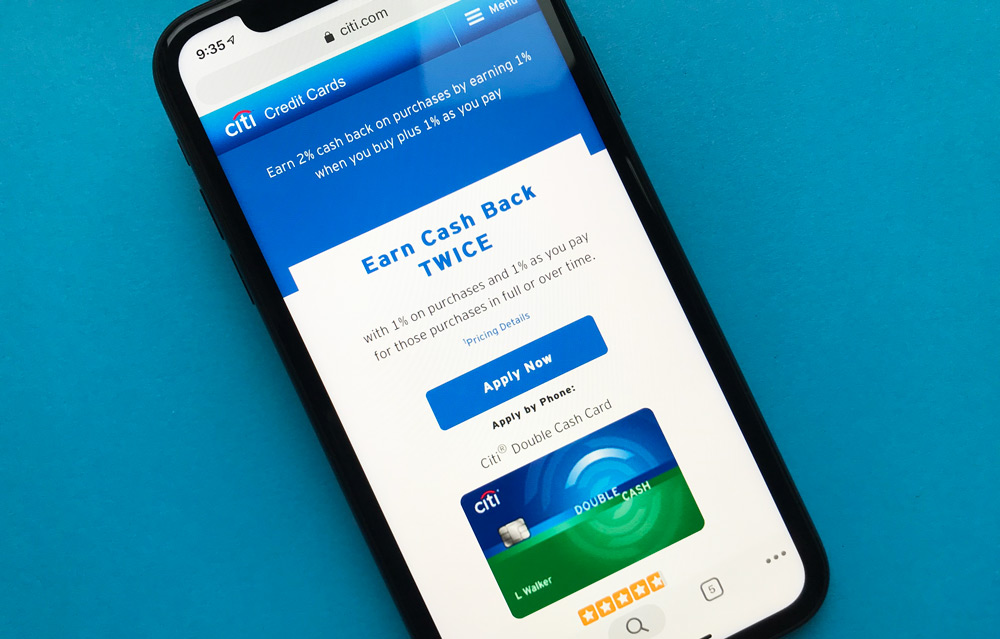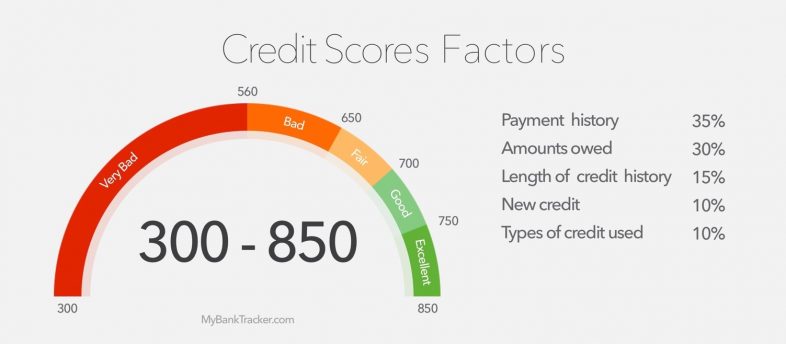The Best Credit Cards of 2025
With responsible usage, a credit card can be a powerful tool that provides a long list of benefits, whether your goal is to get money back on spending, travel in greater comfort, consolidate debt, or build good credit.
With the MyBankTracker expert team of credit card experts analyzing nearly 80+ cards, we are able to find and recommend some great ones that you should consider.
Note: The list is always subject to change as card programs and benefits may change and new options become available.
The Best Credit Cards of 2025
| Credit Card | Best for | MyBankTracker Rating (1-5 Stars) |
|---|---|---|
| Citi Custom Cash Card | Best for Cash Back on General Spending | 5.0 |
| Chase Sapphire Preferred | Best for General Travel Rewards | 5.0 |
| American Express Platinum Card | Best for Premium Travel Perks | 5.0 |
| Capital One VentureOne Rewards Card | Best for Travel Without Annual Fees | 4.0 |
| American Express Blue Cash Preferred Card | Best for Groceries | 5.0 |
| Citi Diamond Preferred | Best for Debt Consolidation | 4.0 |
| Capital One Platinum Secured | Best for Building Credit | 5.0 |
Citi Double Cash: Best for Cash Back on General Spending

Citi Double Cash Card Pros & Cons
| Pros | Cons |
|---|---|
|
|
The Citi Double Cash Card is one of the best cash back credit card to have in your wallet because it has a simple — yet great — cash back program.
You earn 1% cash back on every dollar spent and another 1% cash back on payments toward your card balance. Effectively, you can earn 2% cash back on every purchase.
Even better, there are no limits to cash back earnings and the card has no annual fee.
Read the full Citi Double Cash Card editor’s review.
Chase Sapphire Preferred: Best for General Travel Rewards
Chase Sapphire Preferred Card Pros & Cons
| Pros | Cons |
|---|---|
|
|
Chase Sapphire Preferred is an easy choice for those seeking to earn travel rewards with useful perks in tow.
The rewards program favors those who travel and dine out often. Notably, when you redeem your points for travel through Chase Ultimate Rewards, you receive a 25% bonus redemption value.
And, remember, you can transfer these points to partnered airline frequent flyer or hotel loyalty programs to maximize those points even more.
The card has a $95 annual fee and no foreign transaction fees (handy for international trips).
Read the full Chase Sapphire Preferred Card editor’s review.
The Platinum Card® from American Express: Best for Premium Travel Perks
See Rates & Fees. Terms apply.
The Platinum Card from American Express Card Pros & Cons
| Pros | Cons |
|---|---|
|
|
The Platinum Card from American Express is one of our top recommendations for a premium travel credit card with its long list of perks for those who travel often and want to do so in comfort.
Such extravagant perks include:
- $200 Uber Cash
- $240 digital entertainment credit
- $100 Global Entry or $85 TSA PreCheck fee credit
- $200 hotel credit on prepaid Fine Hotels + Resorts or The Hotel Collection bookings (requires a minimum two-night stay for The Hotel Collection bookings) booked through American Express Travel
- Global Lounge Collection access
- $200 airline fee credit
- 9 CLEAR credit
- Fine Hotels & Resorts Program
- The Hotel Collection
- Marriott Bonvoy Gold Elite Status
- Hilton Honors Gold Status
The card has a $695 annual fee and no foreign transaction fees.
Read the full American Express Platinum Card editor’s review.
Capital One VentureOne Rewards: Best for Travel With No Annual Fee
Capital One VentureOne Rewards Card Pros & Cons
| Pros | Cons |
|---|---|
|
|
For a travel credit card with no annual fee, Capital One VentureOne Rewards is the standout choice.
You earn unlimited 1.25 miles per dollar spent on all purchases and these miles can be redeemed as statement credit toward travel purchases. Most importantly, it has no foreign transaction fees — so you can have this on hand during trips abroad.
Also, don’t forget that these miles can be transferred to the loyalty brands at partnered travel brands — allowing you to get more value from these miles.
Read the full Capital One VentureOne Rewards Card editor’s review.
Blue Cash Preferred from American Express: Best for Groceries
See Rates & Fees. Terms apply.
Blue Cash Preferred Card from American Express Pros & Cons
| Pros | Cons |
|---|---|
|
|
Blue Cash Preferred from American Express continues to be the best option for those who want to maximize cash back earnings on their grocery spending.
It offers:
- 6% cash back at U.S. supermarkets (up to $6,000 per year; 1% thereafter)
- 6% cash back on select U.S. streaming subscriptions
- 3% cash back on transit
- 3% cash back at U.S. gas stations
- 1% cash back on other eligible purchases
The other bonus cash back categories, as seen above, are likely to come in handy for some extra cash back too.
The card has a $95 annual fee (see Rates & Fees; terms apply).
Read the full American Express Blue Cash Preferred Card editor’s review.
Citi Diamond Preferred: Best for Debt Consolidation
Citi Diamond Preferred Card Pros & Cons
| Pros | Cons |
|---|---|
|
|
Citi Diamond Preferred is a great option for those who want to obtain a credit card balance transfer to help consolidate debt at a lower interest rate.
On that note, the card has an extended introductory period on purchases and balance transfers to allow you plenty of time to pay down the debt without high interest payments holding you back.
The card has no annual fee.
Read the full Citi Diamond Preferred Card editor’s review.
Capital One Platinum Secured Credit Card: Best for Building Credit
Capital One Platinum Secured Pros & Cons
| Pros | Cons |
|---|---|
|
|
The Capital One Platinum Secured is one of the best secured credit cards for building good credit because of how easy it is to get started.
With a minimum (refundable) security deposit of $49, $99 or $200, you have an initial credit line of at least $200. After 6 months, Capital One will review your account for a credit line increase.
Capital One reports your account to all three major U.S. credit bureaus. So, use the card responsibly, make on-time payments, and your credit will begin to improve.
Even better, the card has no annual fee.
Read the full Capital One Platinum Secured editor’s review.
How We Picked
Every credit card is designed for a specific type of consumer. Therefore, no one card is the perfect fit for everyone.
We analyzed more than 80 credit cards available on the market and compared their card fees, rewards, benefits and how the card best serves the intended consumers. That said, while some of the cards are from advertisers on MyBankTracker, they are truly the best cards that we’d recommend even if they weren’t affiliated partners.
How to Choose the Best Credit Card for You
We understand how tough of a decision it can be to choose a credit card when there are so many choices available.
You want to apply for the right card that matches your spending habits and overall goal.
Are you trying to consolidate debt, improve your credit, or maximize rewards on spending?
Our recommended starting point: analyze the past 3 to 6 months of spending activity — likely by reviewing your recent bank or credit card statements.
By taking this key step, you can get a realistic estimate of how a new credit card will help you.
For instance, you can get a better idea of how much bonus cash back you’ll earn on grocery purchases. Then, compare it with a different credit card that may offer higher cash back rates on general spending. You might find another credit card to be a smarter choice.
Should You Avoid a Credit Card With Annual Fees?
The simple answer is: no.
Do not be afraid of a credit card annual fee because the total value of the rewards and perks may far exceed the cost of the annual fee.
That said:
You should think about how likely you are to take advantage of a credit card’s advertised benefits. If you don’t use a $100 travel credit on a credit card with a $100 annual fee, you’re losing money.
Quite often, credit cards with annual fees will have extremely lucrative rewards programs and/or perks based on certain types of activity. A frequent traveler can extract thousands of dollars worth of value from a credit card that has a $500 annual fee.
Your Credit Score Matters
Different credit cards are tailored for people with different credit ratings.
Typically, a premium travel credit card or attractive cash back credit card will require good to excellent credit.

So, if you want to apply for one of the premium credit cards, make sure to review your credit score before submitting an application. (Applying for a credit card will result in a temporary hit to your credit — whether or not you’re approved.)
Before applying, you might consider taking the necessary steps to increase your credit score as much as possible.
For those who are new to credit or want to rebuild their credit, secured credit cards are ideal because they tend to not require a credit check. Rather, you will need to provide a security deposit to act as collateral while you take some time to raise your credit score.

